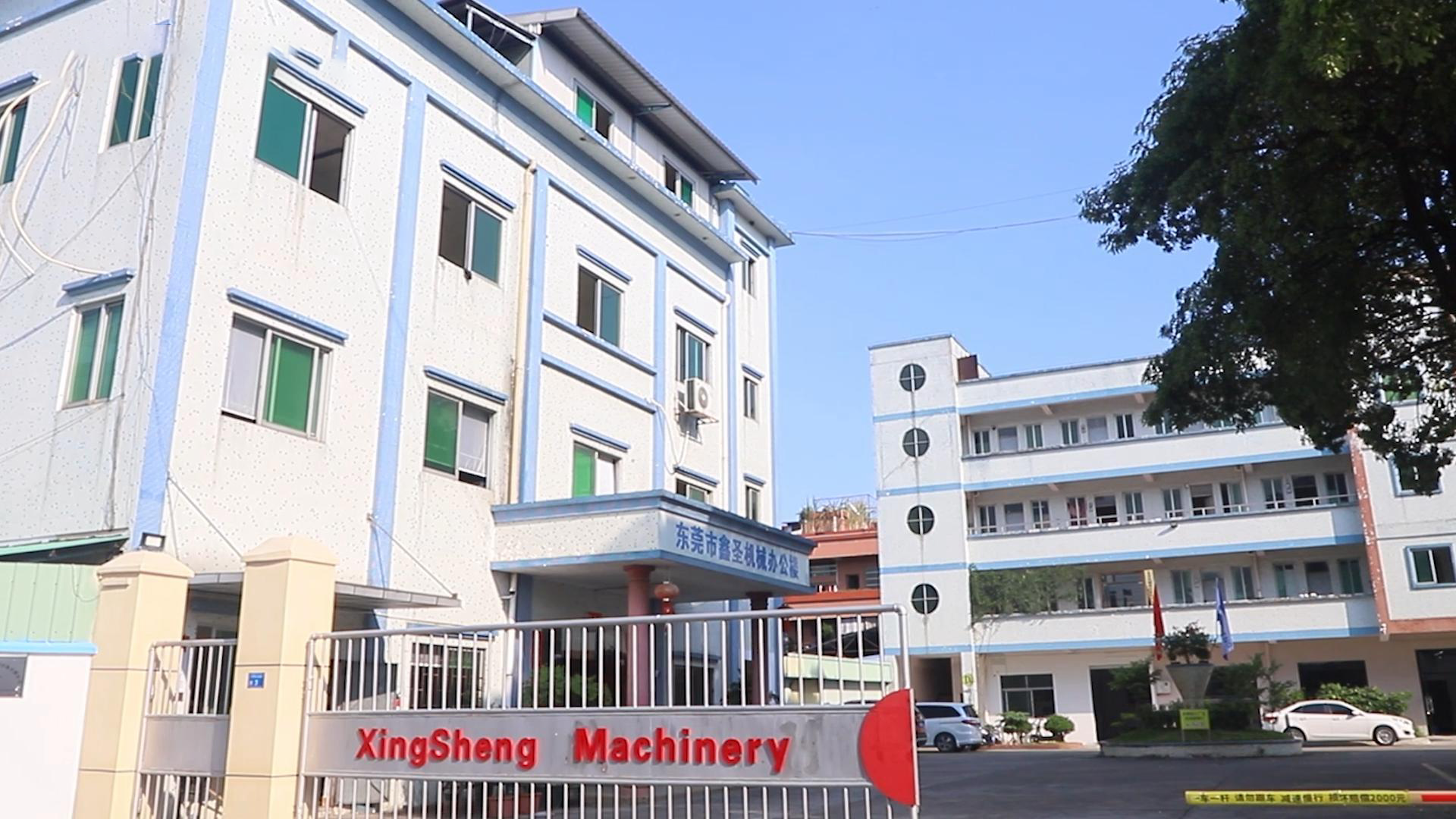CNC နွေဦးပတ်စက်များဖြင့် အလုံးအရင်းနှင့် တိကျသော ထုတ်လုပ်မှု
ခေတ်သစ်ထုတ်လုပ်မှုတွင် CNC Spring Coiling Machines ၏ ဆင့်ကဲဖြစ်စဉ်
CNC နည်းပညာနဲ့ စက်တွေကို ကြွေစေ့နဲ့ ပတ်တဲ့ စက်တွေဟာ စက်မှုလုပ်ငန်းတွေ ကြွေစေ့ ထုတ်လုပ်ပုံကို လုံးဝ ပြောင်းလဲပစ်လိုက်ပြီး တစ်သန်းခွဲကျော် ထုတ်လုပ်တဲ့အခါတောင် မိုက်ခရိုမီတာအဆင့်အထိ မယုံနိုင်စရာ တိကျမှုကို ထောက်ကူပေးပါတယ်။ အရင်တုန်းက အလုပ်သမားတွေဟာ သူတို့ရဲ့ အတွေ့အကြုံကို အခြေခံပြီး အစာသွင်းနှုန်းနဲ့ ကျောရိုးပုံစံတွေကို လက်နဲ့ ညှိပေးခဲ့ရပေမဲ့ ဒီနေ့ CNC စက်တွေက ပရိုဂရမ်လုပ်လို့ရတဲ့ ယုတ္တိဆိုင်ရာ ထိန်းချုပ်ရေးကိရိယာတွေကနေ အလိုအလျောက် ဒါတွေအားလုံးကို စီမံပေးပါတယ်။ အကျိုးကျေးဇူးတွေကလည်း သိသာပါတယ်- အဟောင်းနည်းတွေနဲ့ယှဉ်ရင် တပ်ဆင်ချိန်ဟာ သုံးပုံနှစ်ပုံလောက်လျော့ကျသွားပြီး ဒီစက်တွေဟာ Precision Manufacturing Report 2024 ကနေ မကြာသေးခင်က ရရှိတဲ့ အချက်အလက်တွေအရ 0.1 မီလီမီတာကနေ 26 မီလီမီတာအထိရှိတဲ့ ကြိုးတွေနဲ့ အလုပ်လုပ်နိုင်ပါတယ်။ တကယ်ပဲ သူတို့ကို ထင်ရှားစေတာက အချိုးအစား၊ အကျယ်နဲ့ အဆုံး ပုံသွင်းမှုကို တစ်ချိန်တည်းမှာ ထိန်းချုပ်ခွင့်ပေးတဲ့ မော်တာစနစ်ပါ။ ဒီစွမ်းရည်ဟာ ထုတ်လုပ်မှု တစ်လျှောက်လုံးမှာ အတိုး (သို့) အနှုတ် 0.05mm အတွင်းမှာ တည်ရှိဖို့လိုတဲ့ လေယာဉ်တွေမှာ သုံးတဲ့ အစိတ်အပိုင်းတွေ ထုတ်လုပ်ဖို့ လုံးဝ အရေးပါပါတယ်။
အလိုအလျောက် တိကျမှု: အဆင့်မြင့် CNC စနစ်များဖြင့် စက်ဝန်းအချိန်များကို ၄၀% အထိ လျှော့ချနိုင်သည်
ခေတ်သစ် CNC coiling စက်တွေဟာ လက်ရှိမှာ အချိန်နဲ့တပြေးညီ အလုပ်လုပ်တဲ့ လက်ဆာ အာရုံခံကိရိယာတွေနဲ့ တပ်ဆင်ထားပြီး တစ်မိနစ်ကို coil ၁၅၀ ကျော်နှုန်းနဲ့တောင်မှ 0.1mm အောက် တိကျမှုကို ထိန်းထားဖို့ artificial intelligence စနစ်တွေနဲ့ တွဲလုပ်ပါတယ်။ စက်ပစ္စည်းတွေကို အဆင့်မြှင့်ထားတဲ့ ထုတ်လုပ်သူတွေဟာ ၂၀၁၉ ခုနှစ်တုန်းက မြင်ခဲ့ကြတာနဲ့စာရင် ထုတ်လုပ်မှု စက်ဝန်းတွေကို ၄၀% လျော့ကျလာတယ်လို့ အစီရင်ခံထားကြပါတယ်၊ တန်ဖိုးရှိတဲ့ အချိန်ကို ချွေတာပေးတဲ့ ပိုတော်တဲ့ ကိရိယာ လမ်းကြောင်း ပရိုဂရမ်ရေးအတွက် ကျေးဇူးတင်ပါတယ်။ ဒီစက်တွေမှာ အအေးပုံစံထုတ်မှု လုပ်ငန်းစဉ်တွေမှာ ပစ္စည်း ပြန်လည်ပေါ်ပေါက်မှု ပြဿနာတွေကို ကိုင်တွယ်တဲ့ ပိတ်လှည့်ပြန်ကြားရေး ယန္တရားတွေလည်း ပါပါတယ်။ အဲဒါက ထုတ်လုပ်မှု ပြီးဆုံးပြီးနောက် ပြုပြင်မှု များစွာမှ နည်းလာစေပြီး တချို့ စက်ရုံများတွင် လိုအပ်သော ပြုပြင်မှု များမှာ ၈၂% အထိ ကျဆင်းလာကြောင်း ဖော်ပြထားသည်။ ဆေးဘက်ဆိုင်ရာ ကိရိယာတွေမှာ အသုံးပြုတဲ့ အရည်အသွေးကို ထိန်းချုပ်တဲ့ အရည်အသွေးဟာ တင်းကျပ်တဲ့ စည်းမျဉ်းစည်းကမ်းတွေကို လိုက်နာဖို့ ခြားနားချက်တစ်ခု ဖန်တီးပေးပါတယ်။
နှိုင်းယှဉ်ထုတ်လုပ်မှု: များပြားသောပမာဏရှိသောပတ်ဝန်းကျင်များတွင် အစဉ်အလာ vs CNC coiling
| မက်ထရစ် | အစဉ်အလာ အပတ်ပတ် | CNC Coiling |
|---|---|---|
| ထုတ်လုပ်မှုနှုန်း | တစ်နာရီလျှင် ၄၀-၆၀ ကွင်း | တစ်နေ့လျှင် ၈,၀၀၀-၁၂,၀၀၀ |
| တိကျမှု | ±0.3mm | ±၀.၀၃မင် |
| စတင်ထားရှိရန်အချိန် | ၂-၄ နာရီ | ၁၂-၁၈ မိနစ် |
| ပစ္စည်းများစွန့်ပစ်မှု | 8-12% | 1.2-2.5% |
ဤဇယားသည် အထူးသဖြင့် ISO 13485 စံနှုန်းများနှင့်အညီ ထုတ်လုပ်သော စက်မှုလုပ်ငန်းများတွင် CNC ၏ လွှမ်းမိုးမှုကို ထောက်ပြသည်။ လက်နဲ့လုပ်တဲ့နည်းလမ်းတွေက ရှေ့ပြေးပုံစံထုတ်လုပ်ရာမှာ အသုံးဝင်နေတုန်းပဲ၊ ကားထုတ်လုပ်သူ ၉၂% ဟာ အခုဆို CNC စက်တွေကို အခြေခံပြီး အလုံးအရင်းနဲ့ ထုတ်လုပ်တဲ့ ချိတ်ဆက်မှုနဲ့ ဗို့အားစပရင်တွေကို သုံးနေကြပါတယ်။
အအေးနှင့် ပူပူဆွေးဆွေးဆွေးဆွေးဆွေးဆွေးဆွေးဆွေးဆွေးဆွေးဆွေးဆွေးဆွေးဆွေးဆွေးဆွေးဆွေးဆွေးဆွေးဆွေးဆွေးဆွေးဆွေးဆွေးဆွေးဆွေးဆွေးဆွေးဆွေးဆွေးဆွေးဆွေးဆွေးဆွေးဆွေးဆွေး
နွေဦးထုတ်လုပ်မှုတွင် အအေးနှင့် အပူဖြင့် ထိုးသွင်းခြင်းလုပ်ငန်းစဉ်များ၏ အခြေခံအချက်များ
အခန်းအပူချိန်မှာ CNC စက်တွေနဲ့ ဝိုင်ယာကို ပုံသွင်းတဲ့အခါ အအေးလှည့်ခြင်းဟာ အထူ ၂၆ မီလီမီတာအထိရှိတဲ့ ဝိုင်ယာတွေအတွက် အကောင်းဆုံး အလုပ်ဖြစ်တယ်။ ဒီဖြစ်စဉ်က သိပ်ကို တိကျတဲ့ တိကျမှုကိုလည်း ရရှိပါတယ်၊ အပေါင်း (သို့) အနုတ် 0.1mm အနားမှာပါ၊ ဒါက အစုလိုက် ထုတ်လုပ်တဲ့ ဖိအားဆုံတွေနဲ့ စက်ပစ္စည်းအမျိုးမျိုးမှာ သုံးတဲ့ ဝဲနေတဲ့ ကွေးမှု ပုံစံတွေအတွက် ကြီးကျယ်ပါတယ်။ အပူလှည့်ခြင်းဟာ လုံးဝခြားနားတဲ့ ချဉ်းကပ်မှုတစ်ခုပါ။ ကြိုးဟာ ပထမ အပူချိန် ၇၅၀ နဲ့ ၉၀၀ ဒီဂရီ ဆဲလ်စီယပ်ကြားမှာရှိပြီး အပူချိန်ရှိတုန်းမှာ ပုံဖော်ပါတယ်။ ဒီနည်းက ပိုထူတဲ့ ပစ္စည်းတွေကို ကိုင်တွယ်တယ်၊ တကယ်က ၃၀ မီလီမီတာထက် ပိုကြီးတာပါ၊ ကာဗွန်ဓာတ်မြင့် သံမဏိလို ပိုကြမ်းတမ်းတဲ့ သတ္တုတွေမှာ အတွင်းပိုင်း တင်းမာမှုတွေကို လျော့ကျစေပါတယ်။ အချိုးအစားများ
| လုပ်ငန်းစဉ် | အပူချိန် | ကြိုးအလျားအကွာအဝေး | အဓိက အသုံးပြုချက်များ |
|---|---|---|---|
| အအေးအိတ်ဆွဲခြင်း | အပူချိန်အမြဲတွင်း | 0.526mm | ကားထုတ်လုပ်ရေး၊ အီလက်ထရောနစ်၊ HVAC |
| အပူဖြင့် ထိုးသွင်းခြင်း | ၇၅၀၉၀၀°C | 2065mm | စက်ပစ္စည်းများ၊ စွမ်းအင်၊ ရထားလမ်း |
ကုန်ကြမ်းများ၏ ပြုမူပုံနှင့် အပြောင်းအလဲများ စက်မှုလုပ်ငန်းများအတွက် မှန်ကန်သော နည်းစနစ်ကို ရွေးချယ်ခြင်း
ပစ္စည်းတွေရဲ့ သဘာဝ ခိုင်မာမှု ဂုဏ်သတ္တိတွေကို ထိန်းသိမ်းဖို့ဆို အအေးလှည့်ခြင်းဟာ တကယ်ကို ကောင်းမွန်စွာ အလုပ်ဖြစ်ပါတယ်၊ အထူးသဖြင့် အချိန်ကြာလာတဲ့အခါမှာ တချိန်လုံး အားကို ထိန်းသိမ်းနိုင်တဲ့ ကြိမ်မြောင်းတွေ လိုအပ်တဲ့အခါ၊ စိတ်ချရမှု အရေးပါတဲ့ ဆေးဘက်ဆိုင်ရာ ကိရိယာ အသုံးအဆောင်တွေ တွေးပါ။ နောက်တစ်ဖက်မှာ ပူပြင်းစွာ ပစ်သွင်းခြင်းဟာ 17-7 PH သံမဏိလို ခက်ခဲတဲ့ သတ္တုတွေမှာ ပြန်လည်ဖြစ်ပေါ်လာတဲ့ ပြဿနာတွေကို လျော့ကျစေပါတယ်။ ASM International က ၂၀၂၃ မှာ မကြာခင်က သုတေသနတစ်ခုက စိတ်ဝင်စားစရာတစ်ခုခုကို ပြသခဲ့တယ်။ အပူပိုင်းမှာ ရေနွေးနဲ့လုပ်ထားတဲ့ ကြိမ်ရာသီတွေဟာ ရေပြင်တွင်း ရေနွေးနဲ့လုပ်တဲ့ ကြိမ်ရာသီတွေနဲ့စာရင် အကြိမ်ကြိမ် ဖိအားပေးမှုအောက်မှာ ၂၂ ရာခိုင်နှုန်း ပိုကြာကြာခံနိုင်တာကို တွေ့ရှိခဲ့ပါတယ်။ အဲဒီလို စွမ်းဆောင်မှု ကွာခြားချက်ဟာ စက်မှုပတ်ဝန်းကျင်မှာ ခြားနားချက် တစ်ခုလုံးကို ဖန်တီးပေးပါတယ်၊ အဲဒီမှာ စက်ပစ္စည်း ပျက်စီးမှုဟာ ရွေးစရာ မဟုတ်ပါ။
စွမ်းအင်ထိရောက်မှုနှင့် အမှိုက်လျှော့ချခြင်း
ခေတ်သစ် အပူလှည့်စနစ်တွေဟာ အလိုက်သင့်ပြောင်းလဲတဲ့ induction heating ကို သုံးပြီး စက်ဝန်းအချိန် ၃၀% ပိုမြန်အောင်လုပ်ကာ တစ်ယူနစ် စွမ်းအင်သုံးစွဲမှုကို ယခင်နည်းပညာတွေနဲ့စာရင် ၁၅% လျှော့ချပါတယ်။ CNC ထိန်းချုပ်မှုနှင့် အလိုအလျောက် အရည်အသွေး စစ်ဆေးမှုတို့နှင့် ပေါင်းစပ်မှုသည် ကုန်တင်ကား ချိတ်ဆွဲရေးဆော့များ၏ အကြီးစားထုတ်လုပ်မှုတွင် စက်မှုလုပ်ငန်း၏ မကြာသေးမီက သတ်မှတ်ချက်များအရ အမှိုက်နှုန်းကို ၁.၈% အထိ လျှော့ချခဲ့သည်။
တစ်ချိန်တည်း ထုတ်လုပ်နိုင်မှုအတွက် နွေဦးထုတ်လုပ်မှုတွင် အလိုအလျောက်နှင့် စက်ရုပ်ပေါင်းစပ်ခြင်း
အဆုံးမှ အဆုံးထိ အလိုအလျောက်စနစ်: CNC ကိုင်တွယ်ခြင်းနှင့် စက်ရုပ်ကိုင်တွယ်မှုစနစ်များ ပေါင်းစပ်ခြင်း
ထုတ်လုပ်သူတွေဟာ CNC နွေဦးပတ်စက်တွေကို စက်ရုပ်ပစ္စည်းကိုင်စက်တွေနဲ့ ပေါင်းစပ်ခြင်းဖြင့် ၂၄ နာရီ ၇ ရက်ဆက်တိုက် ထုတ်လုပ်မှုကို ရရှိလာကြပါပြီ။ ဒီစနစ်တွေက 0.1mm ကနေ 30mm အထိရှိတဲ့ ဝိုင်ယာကို အလိုအလျောက်ဖြည့်ပေးပြီး လေဆာပြန်ကြားမှုကနေပြီး အလှည့်အပြောင်းအလဲကို ပြောင်းလဲစွာပြင်ဆင်ပြီး တစ်နာရီမှာ ယူနစ် ၂၀၀၀ ကျော်နှုန်းနဲ့ ပြီးစီးတဲ့ အရည်တွေကို စစ်ဆေးပေးကာ ထုတ်ကုန်ထုတ်လုပ်မှုကို ချောမွေ့စေပြီး ဝက်
အလိုအလျောက် ထပ်ကျော့နိုင်မှုကြောင့် ၉၉.၆% အရွယ်အစား တိကျမှုရရှိခြင်း
ပိတ်လှည့်ပြန်ကြားမှုရှိသည့် servo-electric CNC စနစ်များသည် ISO 13485 အတည်ပြုချက်လိုအပ်သော ဆေးဘက်ဆိုင်ရာကိရိယာ spring များအတွက် အရေးပါသော 500,000 unit များရှိသော batch များတွင် ± 0.02mm tolerance များကို ထိန်းသိမ်းထားသည်။ ပေါင်းစပ်မြင်ကွင်း စစ်ဆေးမှုက လိုင်းနှုန်းမှာ 100% အရွယ်အစား စစ်ဆေးမှုကို လုပ်ဆောင်ပြီး စပေ့စ်ပြင်ပ အစိတ်အပိုင်းတွေကို ပယ်ချပြီး ကွဲပြားမှုဖြစ်တဲ့အခါမှာ အပတ်ပတ် ကိန်းဂဏန်းတွေကို အလိုအလျောက် ပြန်လည်သတ်မှတ်မှုကို အစပျိုးပေးတယ်။
အမြန်ထုတ်လုပ်ရေးလိုင်းများတွင် လူသားအမှားများနှင့် အလုပ်သမားအပေါ် မှီခိုမှု လျော့နည်းစေရန်
ASME ထုတ်လုပ်မှု လေ့လာမှုတစ်ခုအရ အပြည့်အဝ အလိုအလျောက်လိုင်းတွေဟာ အပိုင်းပိုင်း အလိုအလျောက် တပ်ဆင်မှုတွေနဲ့စာရင် လက်လုပ်အကူအညီကို ၈၅% လျော့နည်းစေပါတယ်။ AI အားဖြင့် စွမ်းဆောင်ပေးထားတဲ့ ကြိုတင်ခန့်မှန်းမှု ပြုပြင်ထိန်းသိမ်းမှုဟာ ကြိုတင်မစီစဉ်ထားတဲ့ အချိန်ရပ်နားမှု ၉၂% ကို တားဆီးဖို့ တုန်ခါမှု လက်မှတ်တွေနဲ့ မော်တာစီးကြောင်းတွေကို ဆန်းစစ်ပါတယ်။ ဒီစွမ်းရည်က ကားရပ်တန့်မှုဆောင်းပါးထုတ်လုပ်မှုမှာ ၉၈.၅% အထိရောက်တဲ့ ပထမဖြတ်သန်းမှု yield ကိုနှုန်းတွေနဲ့ မပြတ်သားတဲ့ သုံးအပြောင်းအလဲ လုပ်ဆောင်မှုတွေကို လုပ်ခွင့်ပေးတယ်။
လေကြောင်း၊ ဆေးဝါးနှင့် အခြားလိုအပ်ချက်မြင့် စက်မှုလုပ်ငန်းများအတွက် တိကျသော နွေဦးပတ်လမ်း
လေကြောင်းနှင့် ဆေးဘက်ဆိုင်ရာ ကိရိယာများတွင် 0.1mm အောက်ရှိ ခွင့်ပြုချက်များကို ဖြည့်ဆည်းပေးခြင်း
ယနေ့ ကွန်ပြူတာ ကိန်းဂဏန်း ထိန်းချုပ်မှု ရောင်စုံစက်တွေဟာ သူတို့ရဲ့ ပိတ်လှည့် servo စနစ်တွေနဲ့ အချိန်နဲ့တပြေးညီ လှုပ်ရှားမှုတိုင်းကို ခြေရာခံတဲ့ လေဆာ စောင့်ကြည့်မှု အရည်အသွေးတွေကြောင့် မယုံနိုင်အောင် တင်းကျပ်တဲ့ သည်းခံနိုင်စွမ်းတွေ ရရှိနိုင်ပါတယ်။ လေယာဉ်ထုတ်လုပ်သူများအတွက် လေယာဉ်ထိန်းချုပ်ရေးစနစ်များတွင် တီတန်ပေါင်းစပ်ပစ္စည်းများဖြင့် လုပ်ကိုင်ရာတွင် မီလီမီတာ တစ်ဆယ်ပုံတစ်ပုံအတွင်း တိကျမှုကို ထိန်းသိမ်းရန်သည် ထိုကဲ့သို့သော ခက်ခဲသော လုပ်ငန်းအခြေအနေများတွင် လုံးဝကို အရေးပါသည်။ ဆေးပညာက ပိုတောင် တွန်းပေးတယ်။ အစားထိုးလို့ရတဲ့ အင်ဆူလင်ပန့်တွေ အတွင်းက သေးနုပ်တဲ့ ကြိမ်တံတွေကို စဉ်းစားကြည့်ပါ၊ ၎င်းတို့ဟာ ပတ်လမ်း တစ်သန်းခွဲလောက် အမှားကင်းကင်း ဆက်လက်လုပ်ဆောင်ဖို့ လိုအပ်ပြီး တစ်မီလီမီတာအောက် နေရာတွေမှာလည်း ထည့်သွင်းပေးရပါတယ်။ ကုန်ကြမ်းသိပ္ပံ ဂျာနယ်တွေမှာ မနှစ်က ထုတ်ဝေခဲ့တဲ့ သုတေသနအရ ဒီ အဆင့်မြင့် CNC တပ်ဆင်မှုတွေဟာ ရှေးဟောင်း စက်မှု ပိုက်ထည့်နည်းတွေနဲ့ ယှဉ်ရင် သည်းခံမှု ပြဿနာတွေကြောင့် ဖြစ်တဲ့ အစိတ်အပိုင်း အမှားတွေကို သုံးပုံသုံးပုံလောက် လျှော့ချပေးတယ်။ အထူးသဖြင့် ပျက်ကွက်မှု ရွေးစရာမရှိတဲ့အခါ အရေး
ကိစ္စရပ် လေ့လာမှု: ဆေးဘက်ဆိုင်ရာ ပစ္စည်းများအတွက် မိုက်ခရိုဆော့ဖ်ထုတ်လုပ်မှု
ရှေ့တန်းက စာချုပ်ထုတ်လုပ်သူက အာရုံကြော လှုံ့ဆော်ကိရိယာတွေအတွက် 0.08mm ကြိုးအလျားရှိတဲ့ မိုက်ခရိုဆော့ဖ်တွေကို ထုတ်လုပ်ဖို့ စက်ရုပ် အပတ်ပတ်စနစ်တွေဆီ ပြောင်းခဲ့တယ်။ ဒီစနစ်သစ်ဟာ အချိုး ၁၂ ချောင်းရှိတဲ့ CNC ထိန်းချုပ်မှုကို AI မှ မောင်းနှင်တဲ့ အမြင်စစ်ဆေးမှုနဲ့ ပေါင်းစပ်ပေးပြီး
- အတွင်းဘက်အလျား ၉၉.၉၈% တည်ငြိမ်မှု (± ၂ မီလီမီတာအပြောင်းအလဲ)
- လက်လုပ်အရည်အသွေးစစ်ဆေးမှု ၉၂% လျော့နည်း
- ISO 13485 ဆေးဘက်ဆိုင်ရာကိရိယာစံချိန်စံညွှန်းများနှင့်ကိုက်ညီမှု
ဤအဆင့်မြှင့်တင်မှုသည် ထုတ်လုပ်မှုကုန်ကျစရိတ်ကို ၃၄% လျှော့ချပေးခဲ့ပြီး လစဉ် မိုက်ခရိုစပရင်း ၁၂ သန်းအထိ ထုတ်လုပ်နိုင်မှုကို တိုးချဲ့ပေးခဲ့သည်။ တိကျသော ကွင်းဖြစ်စေခြင်းသည် စီးပွားဖြစ်နိုင်ပြီး စံချိန်စံညွှန်းများနှင့်ကိုက်ညီသော ဆေးဘက်ဆိုင်ရာကိရိယာများ ထုတ်လုပ်နိုင်မှုကို ဖော်ပြပေးသည်။
အရေးပါသော ကဏ္ဍများတွင် အလွန်ပါးလွှာသော ဝါယာကွန်းများကို ကွင်းပုံသွင်းနိုင်စွမ်းအပေါ် တောင်းဆိုမှုများ တိုးတက်လာခြင်း
အသေးစားဖြစ်လာသည့် အချက်များသည် ၀.၁ မီလီမီတာအောက်ရှိ ဝါယာကွန်းများ လိုအပ်သော ဈေးကွက်များတွင် တစ်နှစ်လျှင် ၁၉% ကြီးထွားမှုကို ဦးဆောင်နေပါသည်။ အဓိကကဏ္ဍများတွင် အောက်ပါတို့ ပါဝင်သည်-
| စက်မှုလုပ်ငန်း | ဝါယာကွန်းအသုံးအများဆုံး အထူးသတ်မှတ်ချက်များ | နှစ်စဉ်လိုအပ်မှု တိုးတက်မှု |
|---|---|---|
| ဆေးဘက်ဆိုင်ရာကိရိယာများ | 0.05-0.15mm NiTi | ၂၂% (၂၀၂၃-၂၀၂၈ နှစ်များအတွက် CAGR) |
| လေယာဉ်ရောင်းဆိုင်များ | 0.10mm Inconel | 18% |
| စွမ်းအင်စနစ်များ | 0.08mm Cube | 25% |
၂၀၂၄ အဆင့်မြင့် ထုတ်လုပ်မှု အစီရင်ခံစာတွင် ဖော်ပြထားသည်အတိုင်း၊ ဤအသုံးပြုမှုများသည် အမြန်နှုန်းမြင့် ထုတ်လုပ်မှုအတွင်း အပြောင်းအလဲမဖြစ်စေရန်အတွက် မိုက်ခရွန်အောက်ရှိ နေရာကျမှု ထပ်ကျော့နိုင်မှုနှင့် အထူးပြုလုပ်ထားသော ကိုင်တွယ်မှုရှိသော အပတ်ပတ်စက်များ လိုအပ်သည်။
နွေဦးအလိပ်နည်းပညာတွင် အနာဂတ်အချိုးအစားများ: AI, တည်တံ့မှုနှင့် စမတ်ထုတ်လုပ်မှု
စက်များ ရပ်နားချိန်ကို လျှော့ချရန်အတွက် AI မှ မောင်းနှင်သော ကြိုတင်ခန့်မှန်းမှု ပြုပြင်ထိန်းသိမ်းမှု
နောက်ဆုံး စက်မှု အလိုအလျောက် အစီရင်ခံစာက ပြတာက AI ဟာ အစိတ်အပိုင်း အဝတ်အထည် ပြဿနာတွေကို အထက်တန်းကျောင်း နည်းတွေထက် ၆၈ ရာခိုင်နှုန်း ပိုမြန်မြန် ရှာဖွေနိုင်တာပါ။ ဒီတော်တဲ့ စနစ်တွေဟာ တုန်ခါမှု၊ အပူချိန် ပြောင်းလဲမှု၊ torque reading တွေလို အရာတွေကို ကြည့်ပြီး အစိတ်အပိုင်းတွေ လုံးဝ ပျက်စီးမသွားခင် ဘယ်အချိန်မှာ ပြုပြင်ဖို့လိုတာ သိဖို့ပါ။ ဒီကြိုတင်လုပ်ဆောင်တဲ့ ချဉ်းကပ်မှုက လုပ်ငန်းများစွာမှာ မမျှော်လင့်တဲ့ ပိတ်ခြင်းတွေကို ၄၀% ခန့် လျှော့ချပေးတယ်။ ဥပမာ ကားအစိတ်အပိုင်း ထုတ်လုပ်သူ တစ်ယောက်ကို ယူကြည့်ပါ၊ သူတို့ဟာ သူတို့ရဲ့ AI အားဖြင့် လည်ပတ်တဲ့ စက်သစ်တွေကြောင့် သူတို့ရဲ့ စက်ပစ္စည်းတွေကို အဆက်မပြတ် နာရီ ၂၄၀ ကနေ မွမ်းမံမှု မလိုဘဲ နာရီ ၃၈၀ အထိ တိုးချဲ့နိုင်ခဲ့တယ်။
အမှိုက်နှုန်းကို လျှော့ချပြီး ရေရှည်တည်တံ့မှုကို တိုးတက်စေတဲ့ စမတ်အယ်လ်ဂိုရစ်သမ်များ
စက်သင်ယူမှု ပုံစံတွေဟာ အစာသွင်းနှုန်းနဲ့ တင်းမာမှု ထိန်းချုပ်မှုကို အချိန်နဲ့တပြေးညီ အကောင်းမွန်အောင်လုပ်ခြင်းကနေ ပစ္စည်းအမှိုက်ကို ၂၂% လျှော့ချပါတယ်။ ဒီစနစ်တွေကို အသုံးပြုတဲ့ စက်ရုံတွေဟာ ISO 2768-m ညှိနှိုင်းမှုစံနှုန်းတွေကို ထိန်းသိမ်းရင်း စွမ်းအင်သုံးစွဲမှု ၁၈% လျော့ကျတယ်လို့ အစီရင်ခံထားပါတယ်။ လေဆာအခြေခံ ဝါယာကြိုး စောင့်ကြည့်မှုက ဆေးဘက်ဆိုင်ရာဆော့ဖ်လို အာရုံသိပ်သိမ်မွေ့တဲ့ အသုံးအဆောင်တွေမှာ အမှားတွေကို တားဆီးပေးရင်း ချက်ချင်း ပါမစ်တာပြင်ဆင်မှုကို ခွင့်ပြုပါတယ်။
နောက်မျိုးဆက် နွေဦးထုတ်လုပ်မှု CNC နှင့် စက်ရုပ်အလွန်
နောက်ဆုံးပေါ် နည်းပညာ တိုးတက်မှုတွေ၊ အတ္တသတ်မှတ်တဲ့ အပတ်ပတ်ခေါင်းတွေနဲ့ အရာဝတ္ထုတွေရဲ့ အင်တာနက်ကနေ ဆက်သွယ်ထားတဲ့ ထုတ်လုပ်ရေးလိုင်းတွေ အပါအဝင်ဟာ ထိရောက်တဲ့ လုပ်ငန်းတွေလို့ ကျွန်မတို့ ယူဆတာကို တကယ် တွန်းပို့နေပါတယ်။ ထုတ်လုပ်သူတွေဟာ အခုအခါမှာ အလိုက်သင့် CNC ထိန်းချုပ်မှုကို cloud based simulations နဲ့ ရောစပ်တဲ့ hybrid setups တွေကို သုံးနေကြပြီး မတူညီတဲ့ ထုတ်ကုန်တွေအကြား ပြောင်းတဲ့အခါမှာ ငြီးငွေ့စရာ လက်နဲ့ ပြန်လည်သတ်မှတ်မှုတွေ လျော့နည်းလာပါတယ်။ ဒီဇိုင်းထုတ်လုပ်မှုအတွက် ဒစ်ဂျစ်တယ် အမွှာ နည်းပညာက အင်ဂျင်နီယာတွေကို ပထမဆုံး စပြီး စုပ်ယူမှု ပုံစံသစ်တွေကို စမ်းသပ်ခွင့်ပေးတယ်။ ဒီနည်းလမ်းက ရှေ့ပြေးပုံစံ ဖွံ့ဖြိုးမှု အချိန်တွေကို သိသိသာသာ လျှော့ချပေးပြီး တစ်ခါတစ်လေမှာ သီတင်းပတ် အနည်းငယ်ကနေ နာရီအနည်းငယ်အထိ လျှော့ချပေးပါတယ်။ ဒါ့အပြင် ဒီဗာတူဝါ စမ်းသပ်မှုတွေဟာ ထုတ်လုပ်မှု အစုလိုက်အပြုံလိုက်ကြီးမားတဲ့ အရည်အသွေး စံနှုန်းတွေ ထိန်းသိမ်းဖို့ ကူညီပေးပြီး မကြာခဏတော့ အသေးစိတ်အချက်အလက်တွေကို ချိုးဖောက်မနေပဲ တစ်သန်းခွဲကျော်ကို ဖုံးအုပ်ပါတယ်။
မကြာခဏမေးသောမေးခွန်းများ (FAQ)
CNC နည်းပညာက ဘာလဲ
CNC သို့မဟုတ် ကွန်ပျူတာ ကိန်းဂဏန်း ထိန်းချုပ်မှုသည် နွေဦးထုတ်လုပ်ရေး စက်များကို တိကျစွာနှင့် အလိုအလျောက် လုပ်ဆောင်ခွင့်ပေးသည်၊ လက်လုပ်ပြင်ဆင်မှု လျော့နည်းစေပြီး ထိရောက်မှုနှင့် တိကျမှုကို မြှင့်တင်ပေးသည်။
ပူပူဆွေးဆွေးဆွေးဆွေးဆွေးဆွေးဆွေးဆွေးဆွေးဆွေးဆွေးဆွေးဆွေးဆွေးဆွေးဆွေးဆွေးဆွေးဆွေးဆွေးဆွေးဆွေးဆွေးဆွေးဆွေးဆွေးဆွေးဆွေးဆွေးဆွေးဆွေးဆွေးဆွေးဆွေးဆွေးဆွေးဆွေးဆွေး
အပူလှည့်ခြင်းမှာ ပုံသွင်းမပြုမီ ကြိုးကို အပူပေးခြင်းဖြင့် ပြုလုပ်ထားပြီး ပိုထူတဲ့ ပစ္စည်းများအတွက် သင့်တော်ပြီး အေးလှည့်ခြင်းမှာ အခန်းအပူချိန်တွင် ပြုလုပ်ထားပြီး ပိုပါးတဲ့ ကြိုးများအတွက် ပိုမိုတိကျမှုရှိစေပါတယ်။
CNC နွေဦးပတ်စက် နည်းပညာကနေ ဘယ်လုပ်ငန်းတွေက အများဆုံး အကျိုးခံစားလဲ။
လေကြောင်း၊ ဆေးဘက်ဆိုင်ရာ ကိရိယာများ၊ ကားထုတ်လုပ်ရေးနှင့် စက်မှုကြီးထွားမှုတို့ကဲ့သို့သော လုပ်ငန်းများသည် တိကျမှုနှင့် ပမာဏမြင့်ထုတ်လုပ်မှုအတွက် လိုအပ်ချက်ကြောင့် CNC နွေဦးပတ်ခြင်း နည်းပညာမှ သိသိသာသာ အကျိုးခံစားရသည်။
CNC နွေဦးပတ်က ထုတ်လုပ်မှုနှုန်းကို ဘယ်လို တိုးတက်စေလဲ။
CNC နည်းပညာက တပ်ဆင်ချိန်ကို လျှော့ချပေးပြီး ပိုမြန်တဲ့ coil ထုတ်လုပ်မှုနှုန်းကို ခွင့်ပြုပေးပြီး အစဉ်အလာနည်းလမ်းတွေနဲ့ ယှဉ်ရင် ထုတ်လုပ်မှုနှုန်းကို သိသိသာသာ မြှင့်တင်ပေးပါတယ်။
နွေဦးထုတ်လုပ်မှုမှာ AI ပေါင်းစပ်မှုဟာ ဘာကြောင့် အရေးကြီးတာလဲ။
နွေဦးထုတ်လုပ်မှုထဲတွင် AI ကို ပေါင်းစပ်ခြင်းက ကြိုတင်ခန့်မှန်းထားသော ပြုပြင်ထိန်းသိမ်းမှု၊ အချိန်ရပ်နားမှု လျှော့ချခြင်း၊ ထုတ်လုပ်မှု ပါမစ်များကို အကောင်းမွန်ဆုံးဖြစ်အောင်လုပ်ခြင်းနှင့် လူသားအမှားများကို အနည်းဆုံးဖြစ်စေရန် ကူညီပေးသည်။
အကြောင်းအရာများ
- CNC နွေဦးပတ်စက်များဖြင့် အလုံးအရင်းနှင့် တိကျသော ထုတ်လုပ်မှု
- အအေးနှင့် ပူပူဆွေးဆွေးဆွေးဆွေးဆွေးဆွေးဆွေးဆွေးဆွေးဆွေးဆွေးဆွေးဆွေးဆွေးဆွေးဆွေးဆွေးဆွေးဆွေးဆွေးဆွေးဆွေးဆွေးဆွေးဆွေးဆွေးဆွေးဆွေးဆွေးဆွေးဆွေးဆွေးဆွေးဆွေးဆွေးဆွေး
- တစ်ချိန်တည်း ထုတ်လုပ်နိုင်မှုအတွက် နွေဦးထုတ်လုပ်မှုတွင် အလိုအလျောက်နှင့် စက်ရုပ်ပေါင်းစပ်ခြင်း
- လေကြောင်း၊ ဆေးဝါးနှင့် အခြားလိုအပ်ချက်မြင့် စက်မှုလုပ်ငန်းများအတွက် တိကျသော နွေဦးပတ်လမ်း
- နွေဦးအလိပ်နည်းပညာတွင် အနာဂတ်အချိုးအစားများ: AI, တည်တံ့မှုနှင့် စမတ်ထုတ်လုပ်မှု
-
မကြာခဏမေးသောမေးခွန်းများ (FAQ)
- CNC နည်းပညာက ဘာလဲ
- ပူပူဆွေးဆွေးဆွေးဆွေးဆွေးဆွေးဆွေးဆွေးဆွေးဆွေးဆွေးဆွေးဆွေးဆွေးဆွေးဆွေးဆွေးဆွေးဆွေးဆွေးဆွေးဆွေးဆွေးဆွေးဆွေးဆွေးဆွေးဆွေးဆွေးဆွေးဆွေးဆွေးဆွေးဆွေးဆွေးဆွေးဆွေးဆွေး
- CNC နွေဦးပတ်စက် နည်းပညာကနေ ဘယ်လုပ်ငန်းတွေက အများဆုံး အကျိုးခံစားလဲ။
- CNC နွေဦးပတ်က ထုတ်လုပ်မှုနှုန်းကို ဘယ်လို တိုးတက်စေလဲ။
- နွေဦးထုတ်လုပ်မှုမှာ AI ပေါင်းစပ်မှုဟာ ဘာကြောင့် အရေးကြီးတာလဲ။



